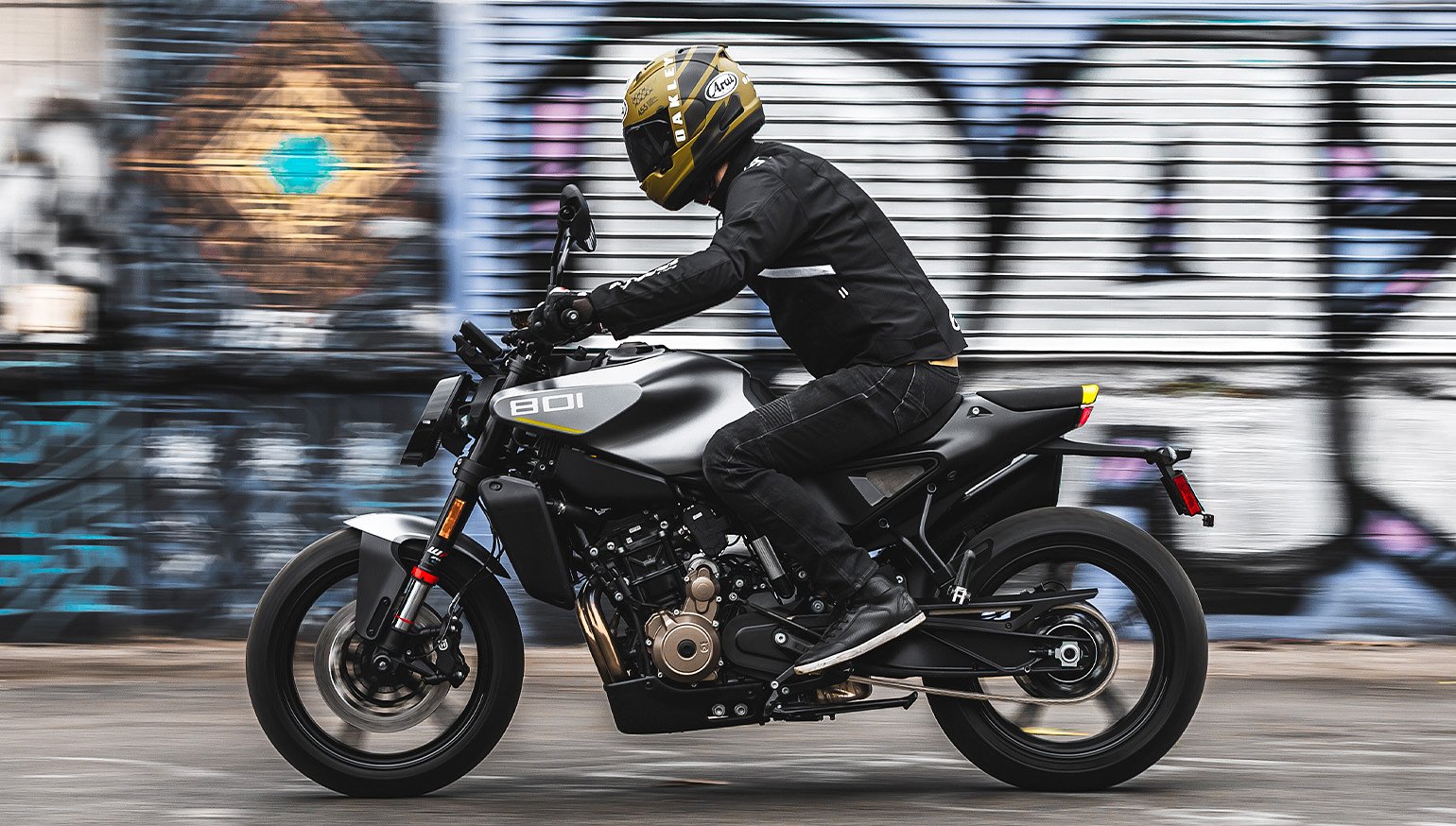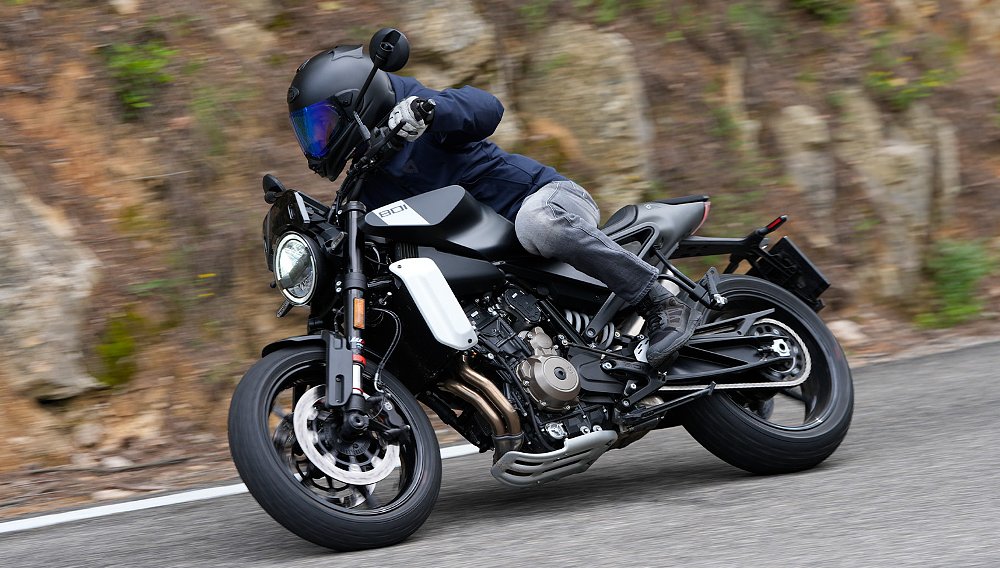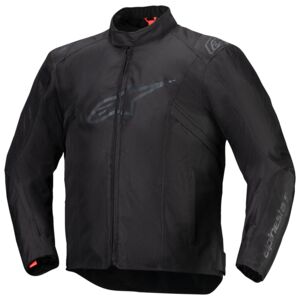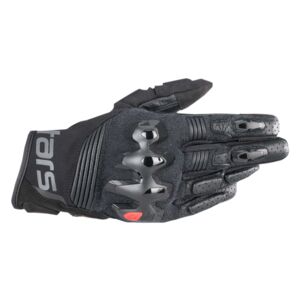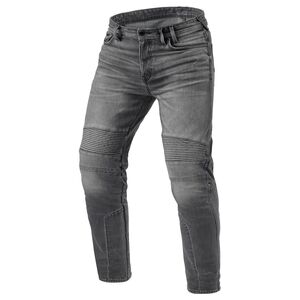The year is 2015. The jeans are skinny, selvedge, and cuffed. The canvas jackets are waxed, and so are the mustaches. It’s the pinnacle of 21st-century hipster culture and the café racer craze. It’s also the year Husqvarna introduces the Vitpilen 701 prototype.
Doted on by EICMA crowds and netizens alike, the neo-café concept was having a bigger moment than kale and cold-brewed coffee. It was the darling of comment sections and online message boards. Too bad Husky didn’t release the production model until 2018. By then, café racer popularity was already on the downswing. But the die was cast. There was no way to reverse course. That is, until seven years later — until the Vitpilen 801.
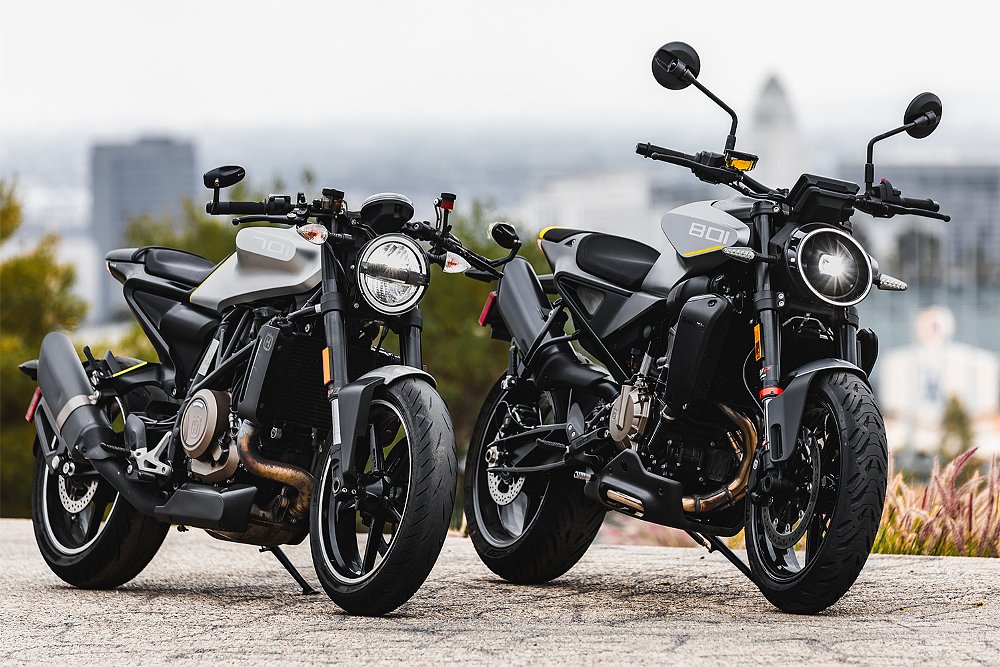
The year is 2025. The jeans are baggy (if you’re bothering to wear jeans at all). Sweatpants aren’t just socially acceptable, they're a sartorial staple. Chambray shirts and wing-tipped boots are out. Mesh sneakers and athlesiure wear are in. In this post-pandemic world, comfort is cool. Husqvarna seems acutely aware of that fact.
In its 801 era, the Vitpilen’s styling is still sporty; its ergos are just more relaxed. It’s still sleek, it’s just more sensible. The Vitpilen 801 may have shed its café racer image, but even more capability accompanies its added comfort.
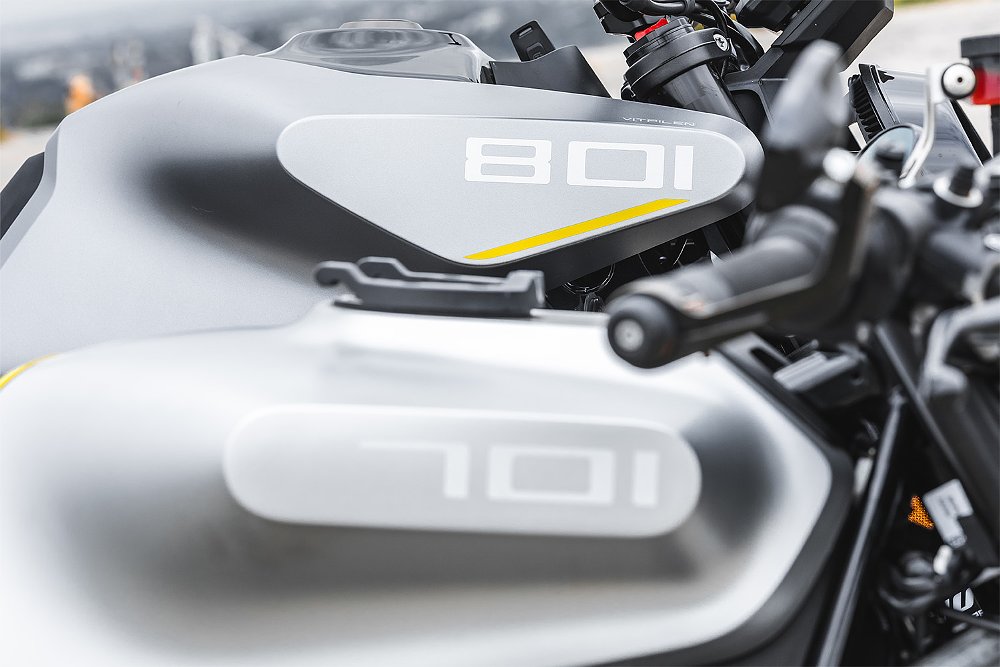
Elevating the white arrow
Testing a new model against its predecessor is a rare occurrence. That’s because manufacturers often ship media test units to dealerships by year’s end. That was the situation when Husqvarna left a 2025 Vitpilen 801 in my charge. Despite my best appeals, Vitpilen 701s left Husky headquarters long ago. I was crestfallen. That's when my good friend Jeff Chen, the proud owner of a 2019 Vitpilen 701, came to the rescue.
His bike was an ideal candidate for several reasons. One, Jeff was willing to lend it to me (that’s a small but important detail). Two, he refrained from making any major modifications. The Brembo clutch master cylinder, tanklock ring, and Rizoma bar end mirrors installed on his 701 offered little to no performance advantage over bone-stock units. That’s imperative, especially when it comes to comparing engines.
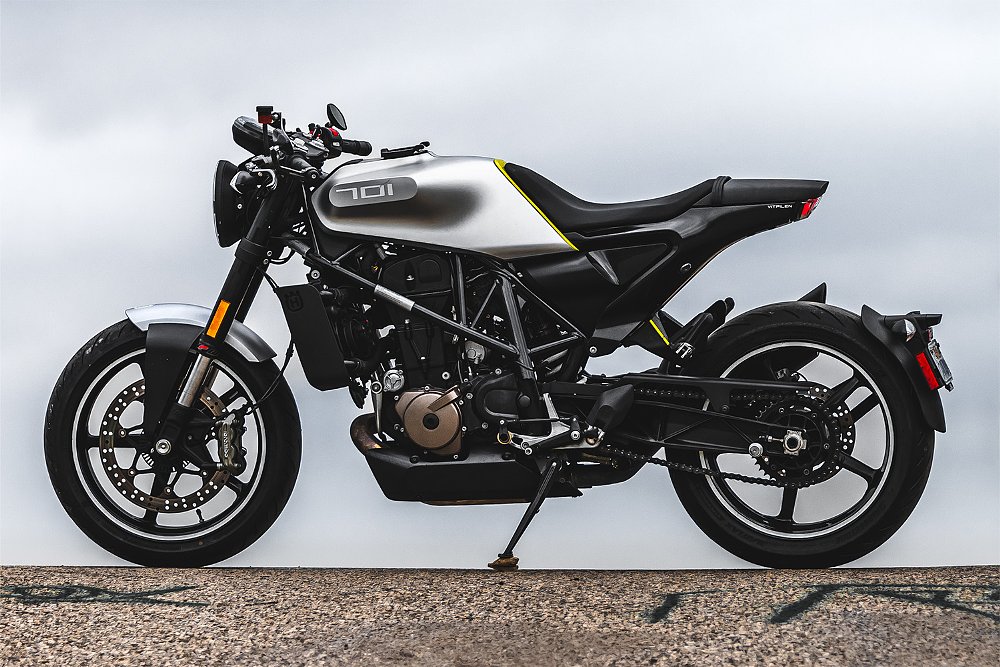
Now harnessing a 799 cc parallel twin, the ‘Pilen doesn’t just grow in capacity, it grows an extra cylinder. For score-keeping purposes, that’s about 15% more volume than the outgoing 693 cc single, all spread across 100% more cylinders. Transplanted from the KTM 790 Duke and Svartpilen 801, the LC8c engine still produces 105 horsepower (at 9,250 rpm) and 64.2 foot-pounds of torque (at 8,000 rpm). That’s a healthy portion more than the 75 ponies (at 8,500 rpm) and 53 foot-pounds (at 6,750 rpm) claimed by the 701’s thumper.
The differences are just as apparent in the saddle. Upon startup, the 701 idles with an almost agricultural pitter-patter. That charming quality disappears with the twist of the throttle. The big-bore single is quick to rev, low on vibes, and high on fun factor. Yet, the 801’s p-twin is a clear upgrade in every sense.
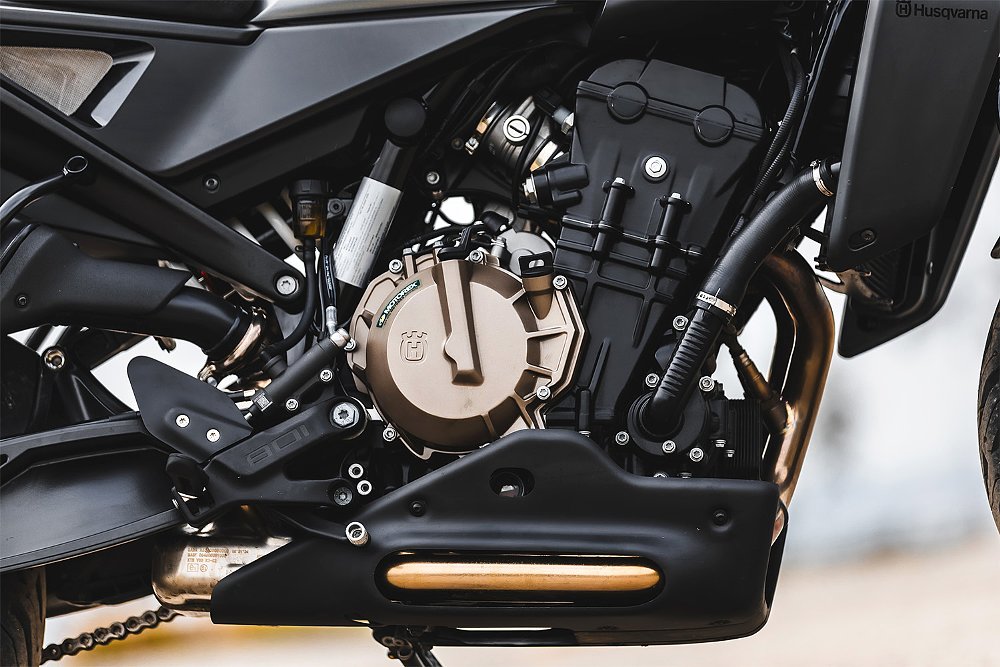
I previously gushed over the 799 cc mill in my 2024 Svartpilen 801 first ride review. My reaction is no different here. The platform is as lively as ever. Crack the throttle and a raspy growl (a byproduct of the 285-degree firing order) issues from its black-finished end can. Although responsive in the lower and upper register, the twin is its best self in the midrange, where hard acceleration produces scenery-blurring results.
Fast is just one adjective that describes the 801. Sophisticated is another, something that hardly applies to the 701. The Vitpilen debuted with switchable ABS, traction, control, and a bi-directional quickshifter. That’s about the extent of its electronic aids. No ride modes. No multi-level wheelie control. No five-inch TFT display. All things the futuristic roadster now enjoys.
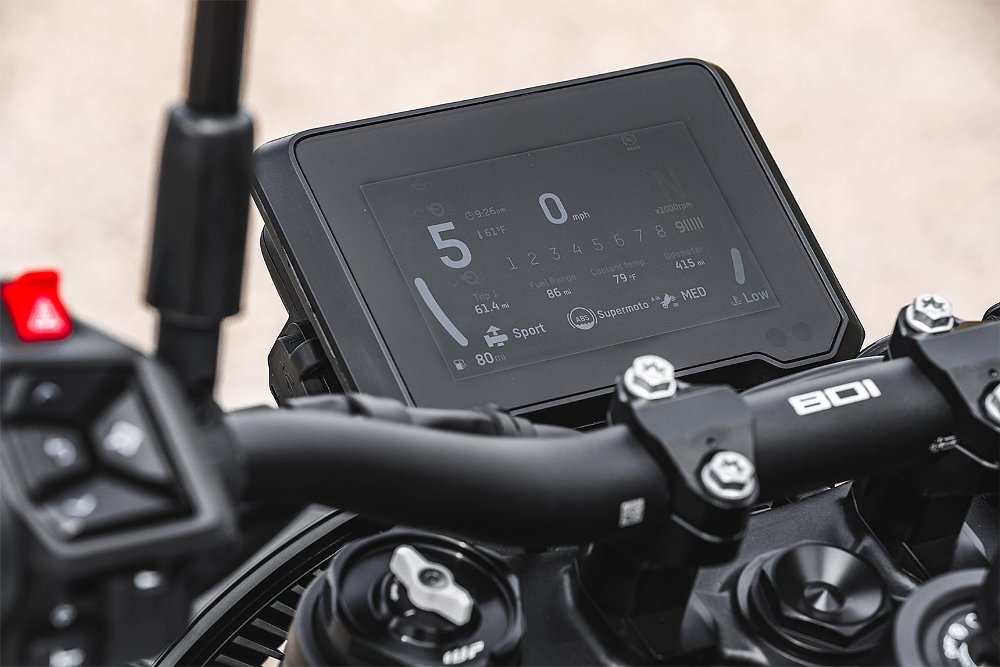
Whereas the Vitpilen used to offer the most basic of riding experiences (by modern standards), the 801 favors personalization, putting a raft of settings at the rider’s discretion. That consists of three ride modes (Street, Sport, and Rain), IMU-driven cornering ABS, and lean-based traction control. Husqvarna outfitted my test unit with its optional Dynamic ride mode, which unlocks even more options, like 10 levels of rear wheel slip and Supermoto ABS mode.
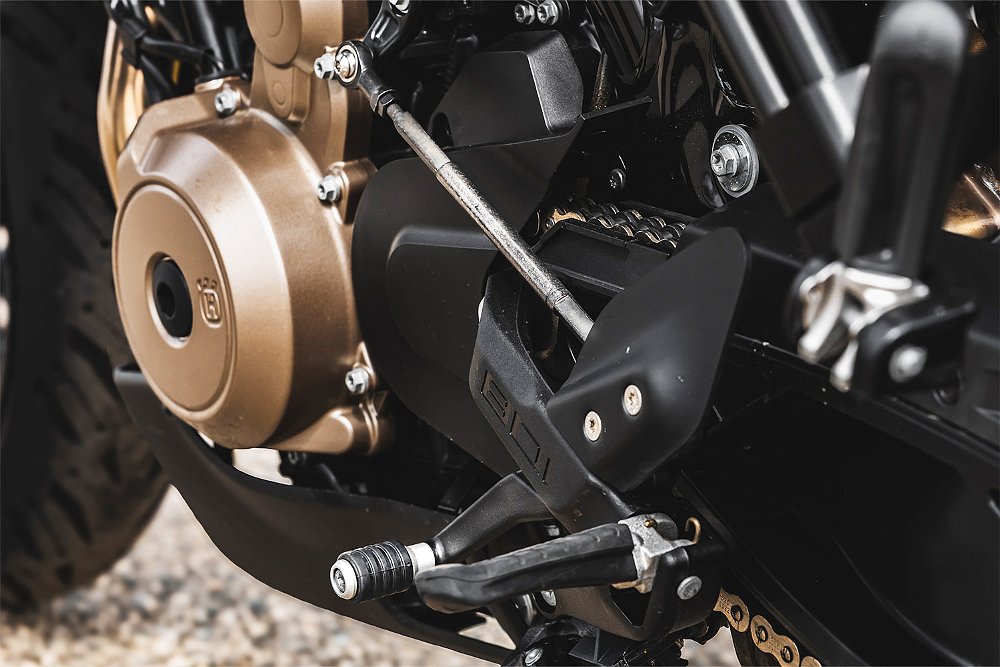
The advanced electronics suite may deliver new levels of control but it also requires extra time investment. As opposed to the 701, where the user simply hops aboard and rides away, getting acquainted with the 801 is a crash course in submenus. For sanity’s sake, the system saves the rider’s previous settings. Still, changing the ride mode or resetting the trip meter is always a combination of button presses away. Intuitive controls and an easy-to-navigate folder system streamline those decisions, but the 801’s complexity can overwhelm, especially when compared to the stone simplicity of the 701. That holds true in all but one area: suspension.
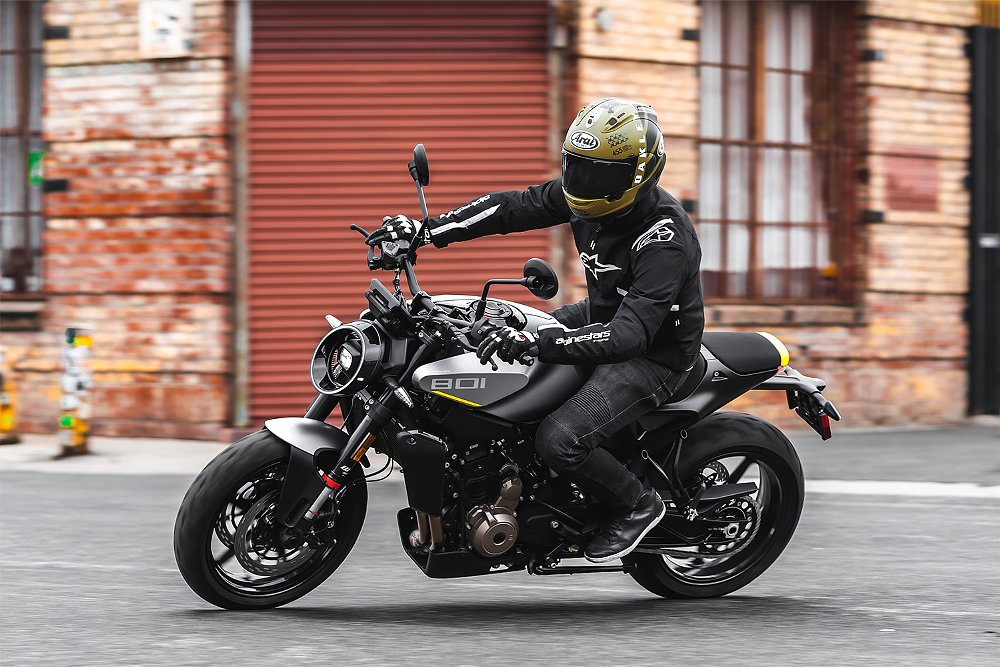
In the 701 days, the Vitpilen touted a 43 mm WP fork and WP rear shock. The former benefitted from 20-odd clicks of compression and rebound adjustment. The latter offered similar levels of rebound damping and several spring preload settings. The 801’s WP APEX suspension favors a simpler tuning approach. The front end is still adjustable for compression and rebound but with only five available settings. The same goes for the shock’s rebound damping, which even bears a soft-to-hard label to avoid all confusion. It’s clarity over complexity, simplicity over surplus. Most importantly, it’s effective. That’s much was evident out on the road.

The Vitpilen 701 is fleet-footed, with handling that’s equal parts light, quick, and precise. Its successor follows much of that same formula, even if it weighs around 60 more pounds and measures 1.5 extra inches in wheelbase. The chassis is both sporty and supple. Whether leaning through the curves of the Angeles Crest Highway or navigating congested downtown traffic, the 801 was communicative without compromising comfort; it was competent and compliant.
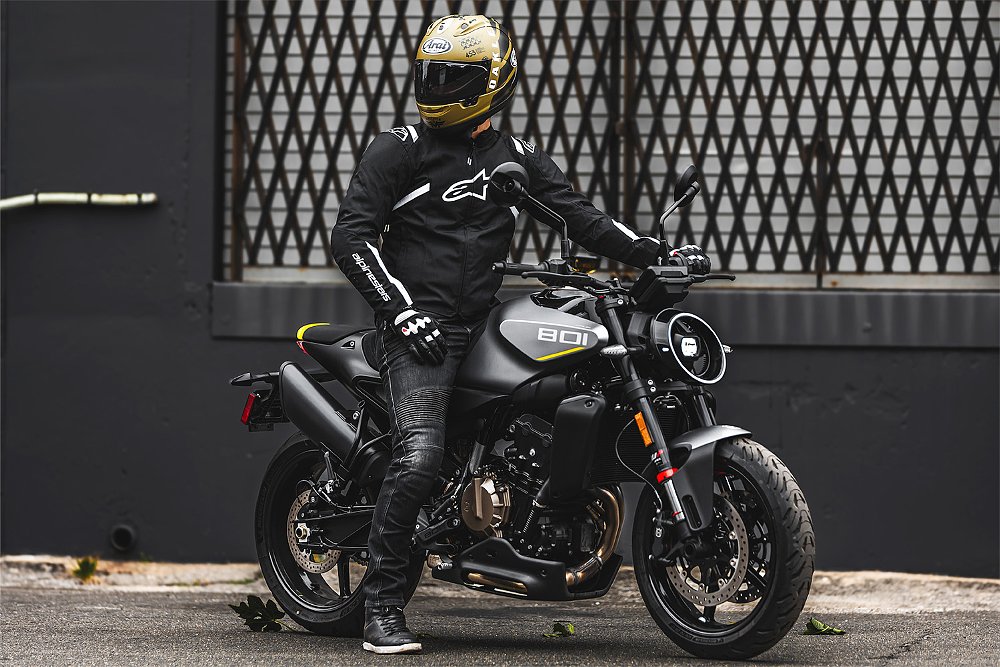
The only quality the 801 can’t replicate is the 701’s direct steering feel. After all, that’s a byproduct of the model’s yoke-mounted clip-ons. Presented with a traditional handlebar, I often pulled the Vitpilen 801 into the corner along with my body weight. The opposite was true with the 701, as I tended to push the bike into the turn underneath my weight. However, what the 801 gives up in directness, it gains in everyday comfort.
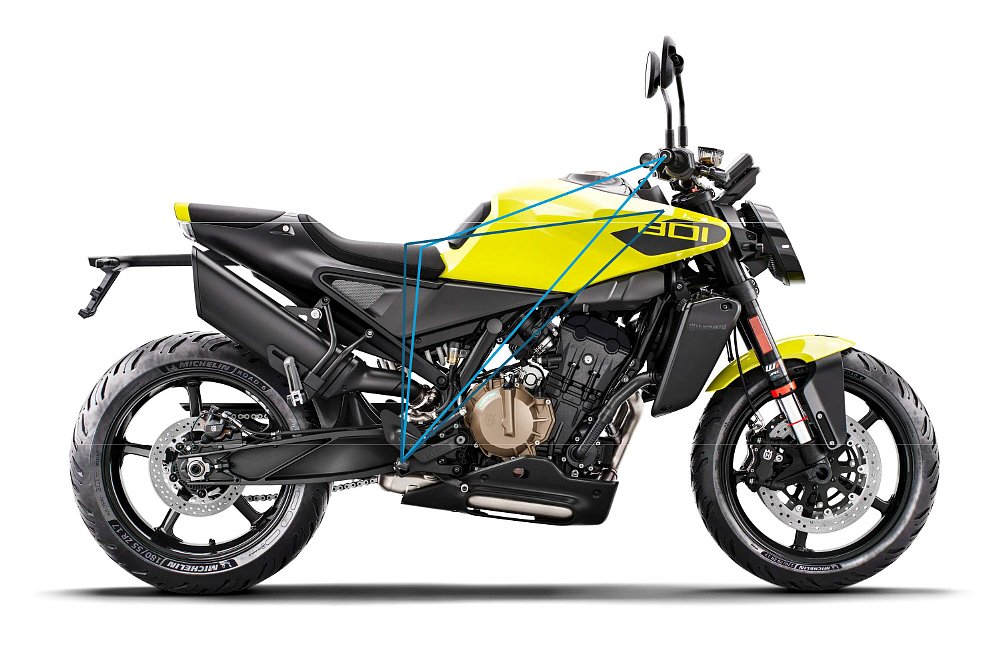
With its clip-on handlebars integrated into the top triple tree, the 701 never placed too much weight on my wrists. It did pull me further over the front tank, though. The same can’t be said for the 801. Featuring a moderate rise and practically no pullback, the Vitpilen’s new handlebar results in a nearly neutral riding position, with the user leaning ever so slightly forward. I found the ergonomics largely agreeable, not just while cruising through the concrete jungle but also during extended freeway travel. Surprisingly, I shared the same sentiments for the 801’s seat.
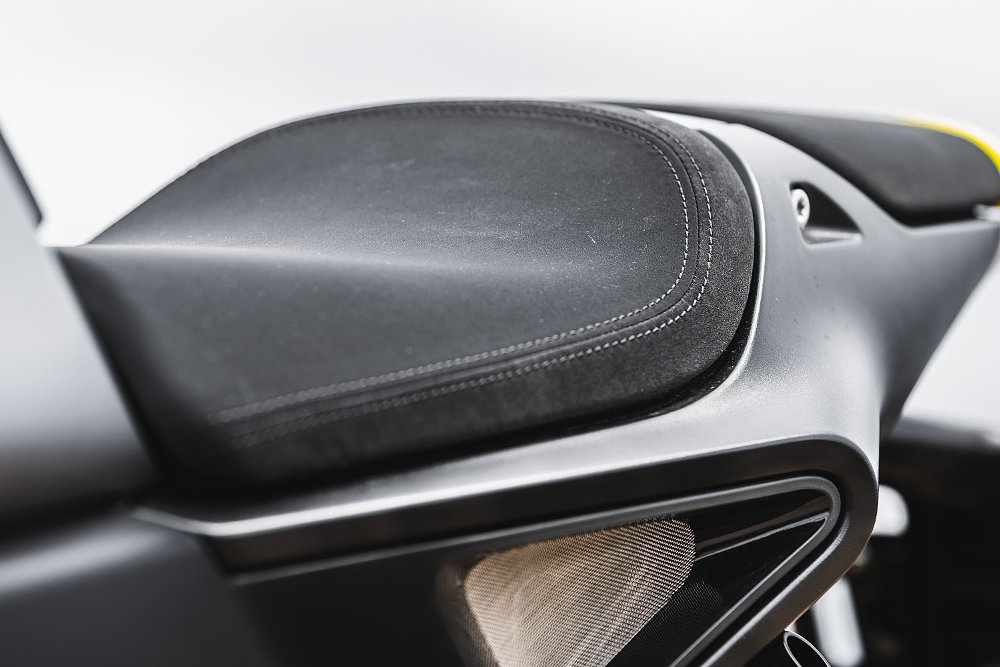
The 701’s modestly padded plank left much to be desired by my derriere. My bony behind had no complaints aboard the new ‘Pilen. Yes, its seat is thin, barely contoured, and by no means plush, but by this segment’s standards, it’s comfortable. Isn’t that what Husqvarna was going after in the first place?
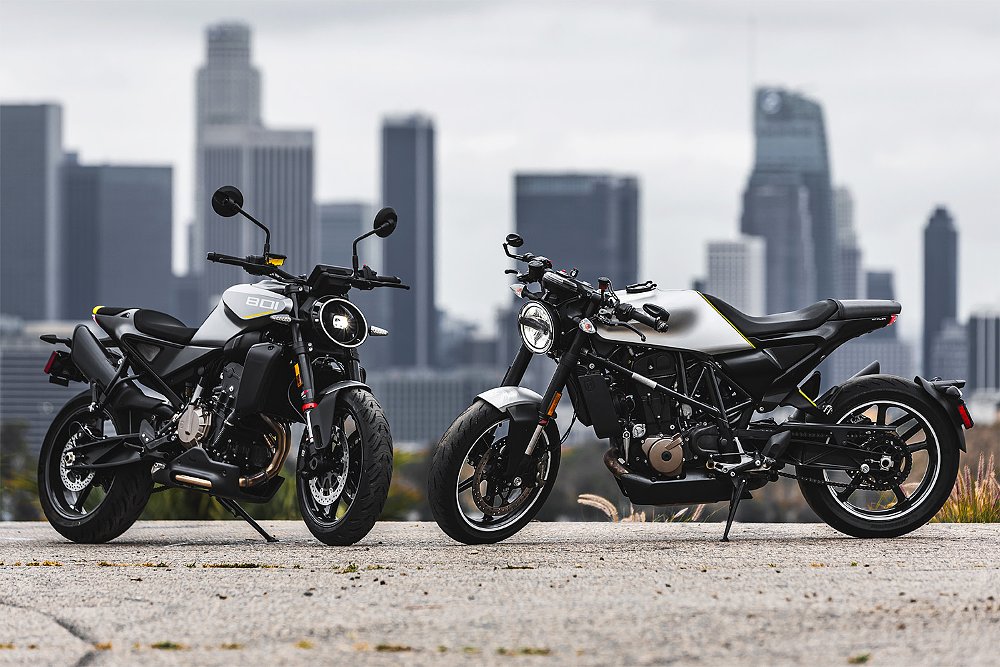
New identity or identity crisis?
When the Vitpilen 701 arrived in 2018, it was unique. It was full of character. For lack of a better term, it was quirky (man, what a hipster thing to say). By moving away from its café racer roots, the model isn’t just taking the roadster route, it’s blending in with the crowd. The Vitpilen’s sibling, the Svartpilen 801, traveled a similar path just last year.
Shedding its dirt tracking influences in favor of 17-inch wheels and pseudo-scrambler styling, the Svart drew itself closer to the Vitpilen. The Vit returned in kind, abandoning its café-inspired controls for a standard handlebar. That’s the thing. Meeting in the middle only pushes both ‘Pilens that much closer to KTM’s 790 Duke (something Zack pondered when riding the Svartpilen 801 in a recent Daily Rider episode).
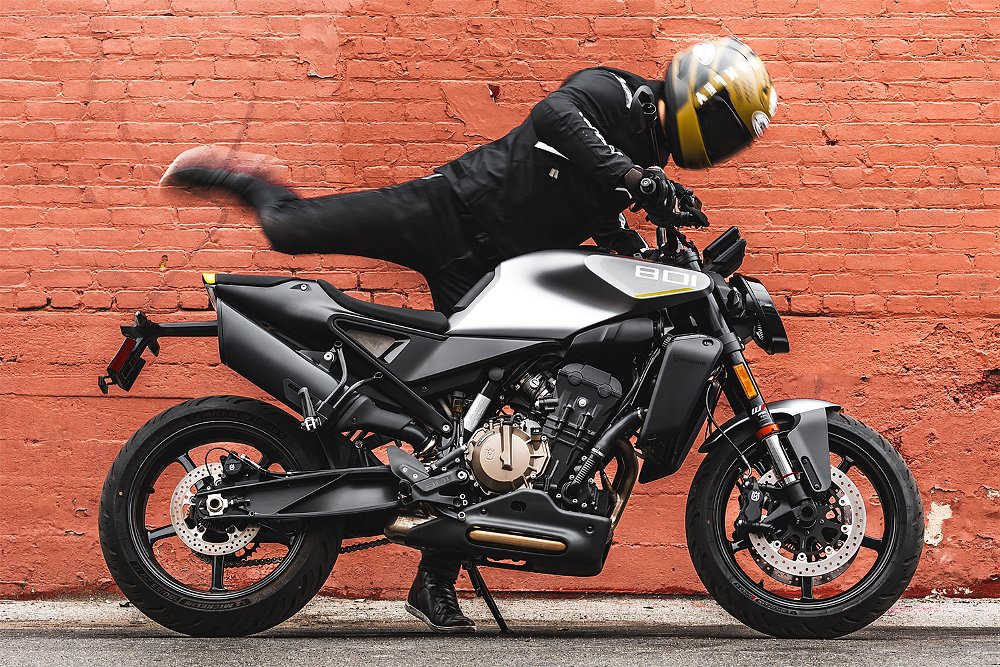
Now, the only features differentiating the two Huskies are the bin parts (headlights, belly pans, radiator shrouds, etc.) bolted to them. Their engines are the same. Their chassis are the same. Heck, even their wheels are the same. Mechanically, they’re indistinguishable. The 2025 Vitpilen 801 is objectively better than the bike it replaces. The engine is more powerful, the tech is more modern, and the suspension is user-friendly, all while presenting a more comfortable ride.
Yes, comfort is cool now, but so is individuality. I can’t help but feel that the Vitpilen, in 801 form, lost a bit of that.
| 2025 Husqvarna Vitpilen 801 | |
|---|---|
| Price | $11,269 (as tested), $10,499 (MSRP) |
| Engine | 799 cc, liquid-cooled, eight-valve, parallel twin |
|
Transmission, final drive |
Six-speed, chain |
| Claimed horsepower | 105 (at 9,250 rpm) |
| Claimed torque | 64.2 foot-pounds (at 8,000 rpm) |
| Frame | Steel tubular |
| Front suspension | WP APEX 43 mm fork, adjustable for rebound and compression damping; 5.5 inches of travel |
| Rear suspension | WP APEX shock, adjustable for spring preload and rebound damping; 5.9 inches of travel |
| Front brake | Dual J.Juan four-piston calipers, 300 mm discs with ABS |
| Rear brake | J.Juan two-piston caliper, 240 mm disc with ABS |
| Rake, trail | 24.5 degrees, 3.9 inches |
| Wheelbase | 58.1 inches |
| Seat height | 32.3 inches |
| Fuel capacity | 3.7 gallons |
| Tires | Michelin Road 6, 120/70R17 front, 180/55R17 rear |
| Claimed weight | 397 pounds (without fuel) |
| Available | Now |
| Warranty | 24 months |
| More info | husqvarna-motorcycles.com |




